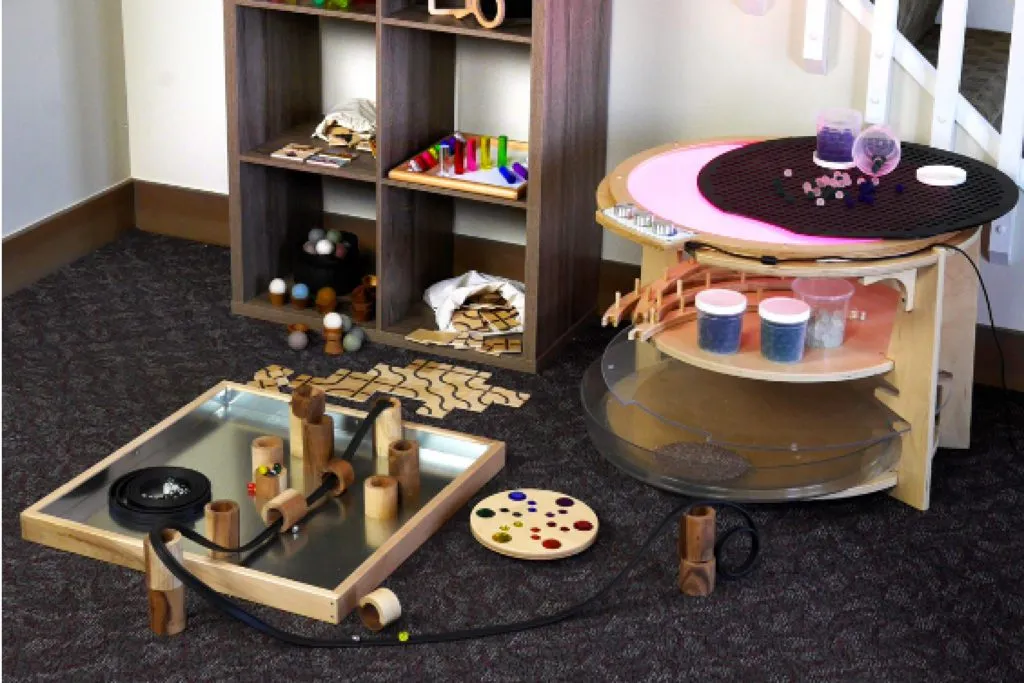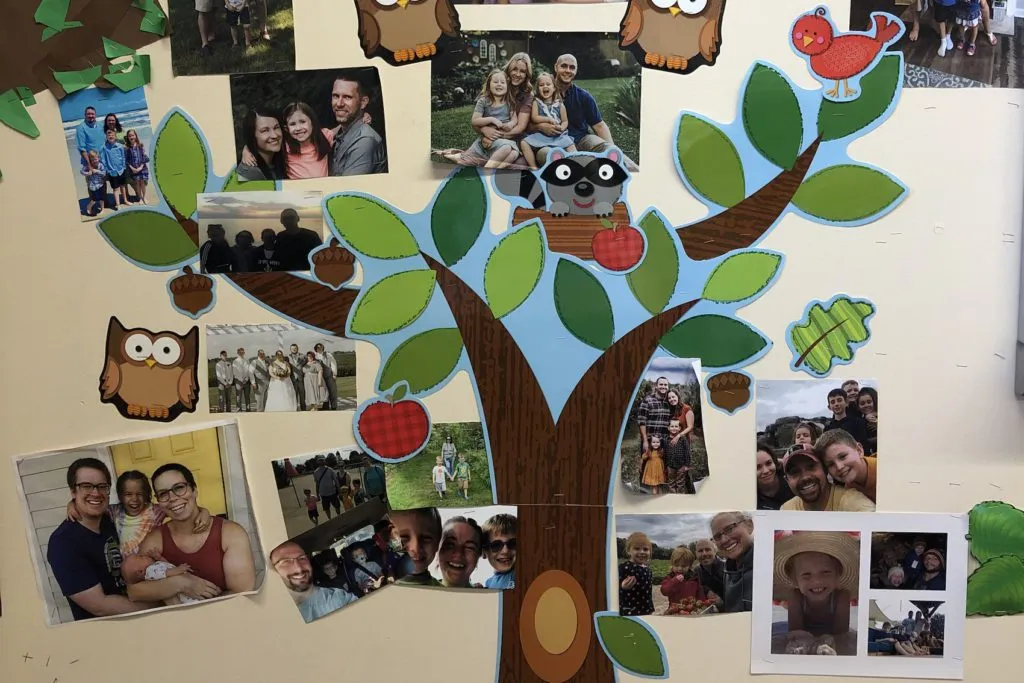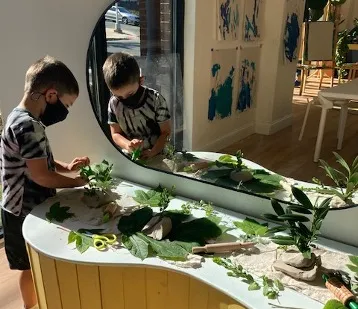3 Things to Look For When Selecting Classroom Materials

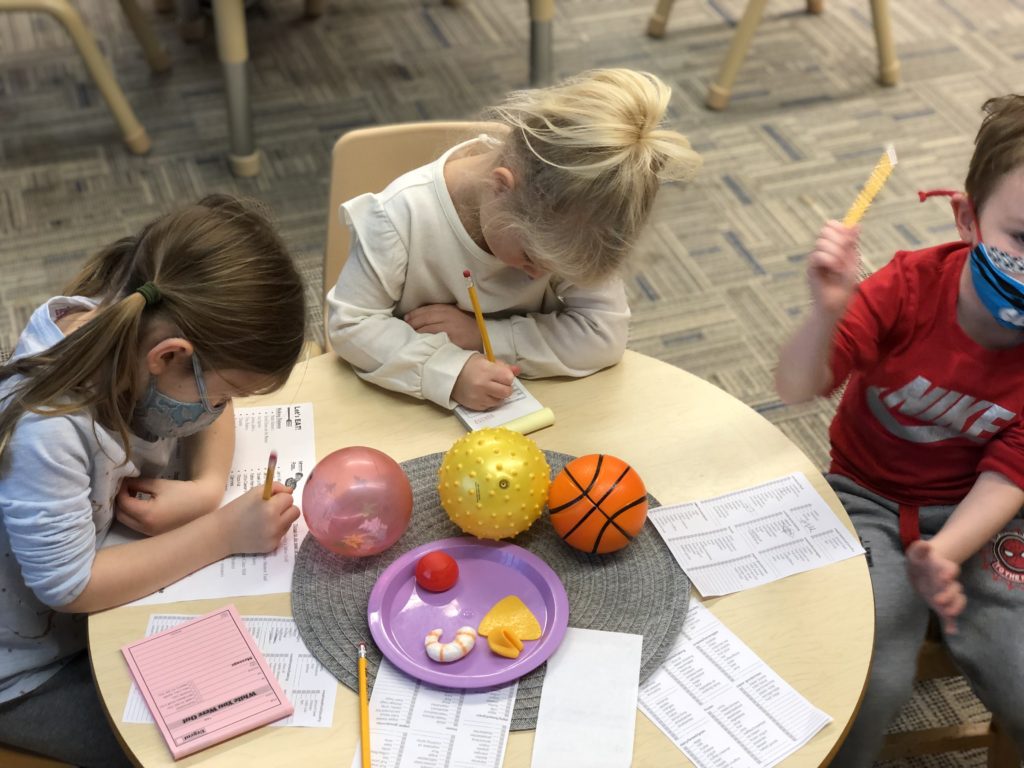
In preschool classrooms, children naturally want to play, write, and investigate. Their learning experiences are supported with materials such as books, clipboards, paper, paint, an art easel, kitchen utensils, blocks, puppets—classroom materials that support their exploration and learning.
Recently, in a preschool classroom we visited in Westfield, Indiana, we noticed that simply placing common classroom materials such as magnifying glasses and clipboards with paper in the interest areas encouraged children to start writing, playing, and investigating with them. As you think about the materials in your classroom, we wanted to share three things to consider.
1. Do your classroom materials encourage shared writing experiences?
 Shared writing offers children the opportunity to watch sounds and words become written text right before their eyes. Children learn that print has meaning by seeing it in the environment and using print in their play. As they watch, imitate, and explore, they are learning that print has meaning; that every word can be written down and read; and that reading and writing have rules, like going from left to right and top to bottom, punctuation, and lower- and uppercase letters.
Shared writing offers children the opportunity to watch sounds and words become written text right before their eyes. Children learn that print has meaning by seeing it in the environment and using print in their play. As they watch, imitate, and explore, they are learning that print has meaning; that every word can be written down and read; and that reading and writing have rules, like going from left to right and top to bottom, punctuation, and lower- and uppercase letters.
Promoting shared writing experiences can be done with classroom materials as simple as a clipboard, a piece of paper, and a writing utensil. Children naturally want to write; to share what they’ve written with friends; and to document what they have discovered when measuring, counting, or sorting. By simply placing clipboards with tiny pieces of paper around Larissa’s classroom in Westfield, the children in her class were inspired to create a mini restaurant, take your order, and give it to the chef to make. They drew pictures of what their cake would look like after it was baked and shared what it would look like with their friends.
2. Do your classroom materials enhance children’s ability to investigate and play?
 Elevate children’s engagement and provide them with choices by choosing materials for the interest areas that allow them to explore objects that might be totally new to them, such as ramps, count and thread stones, or offer familiar items that are typically used by grown-ups, such as oven mits, restaurant menus, or measuring cups.
Elevate children’s engagement and provide them with choices by choosing materials for the interest areas that allow them to explore objects that might be totally new to them, such as ramps, count and thread stones, or offer familiar items that are typically used by grown-ups, such as oven mits, restaurant menus, or measuring cups.
Many children have never seen a geoboard or child-friendly tweezers outside of a classroom, so having the opportunity to experiment with them communicates that the classroom is a place where they can explore and try their ideas.
Children are also often excited to use the same household items that they see their family members using every day. Having the chance to make lists on a clipboard, work with a flashlight, or load and unload “groceries” from tote bags is an exciting way to participate in the daily routines they see grown-ups doing at home. These experiences reinforce the idea that the classroom is a place where they can do things on their own.
3. Do your classroom materials provide support for you, the teacher?
 Take a minute to gaze around your classroom. Do the materials help you guide daily instruction for the whole group and in your interest areas? Do you have posters to write on and easily erase, to document the children’s ideas and discoveries? Do you have labels for your interest areas and block labels to support independent cleanup—do you have everything you need to seamlessly guide their learning?
Take a minute to gaze around your classroom. Do the materials help you guide daily instruction for the whole group and in your interest areas? Do you have posters to write on and easily erase, to document the children’s ideas and discoveries? Do you have labels for your interest areas and block labels to support independent cleanup—do you have everything you need to seamlessly guide their learning?
These items help build a classroom environment that supports robust learning experiences for children.
What types of materials should I include?
As you’re setting up your classrooms and interest areas, include open-ended classroom materials that encourage children to write, discover, and to investigate. Access to simple tools and everyday items can encourage children to explore their ideas, deeply engage in pretend play, conduct experiments, and find answers to their own questions. For example, you might offer materials such as
- expandable hoops to help children sort items by size,
- a balance scale to help them determine if one item is heavier than another,
- magnifying glasses to help them further investigate the details on a shell, and
- flashlights and play microphones to help bring their dramatic play to life.

Looking to select the right materials for your classrooms? Teaching Strategies offers materials selected just for you.
The Essentials Kit provides foundational, bilingual teaching resources and the materials children need to investigate and play each day. We know your time is valuable, which is why we have created all the right materials for you, all in this one kit.
The Kodo Kit includes sixteen unique tools that are selected for their versatility, durability, and appeal to young children.
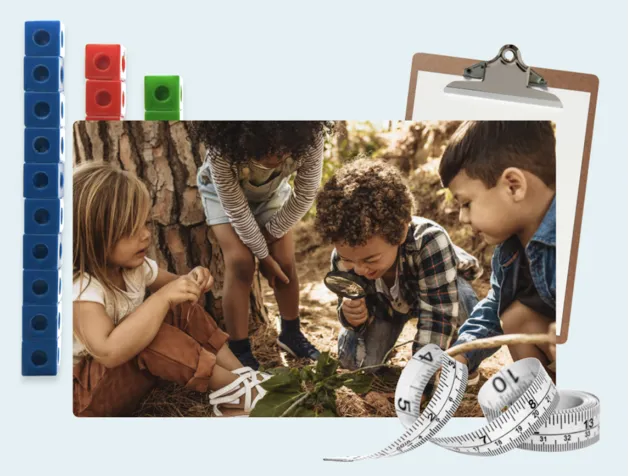
Let’s Investigate.
Let’s Play.
Ensure preschool children and teachers have equitable access to materials they need to engage in meaningful daily learning experiences and provide open-ended classroom materials that bring learning to life.
